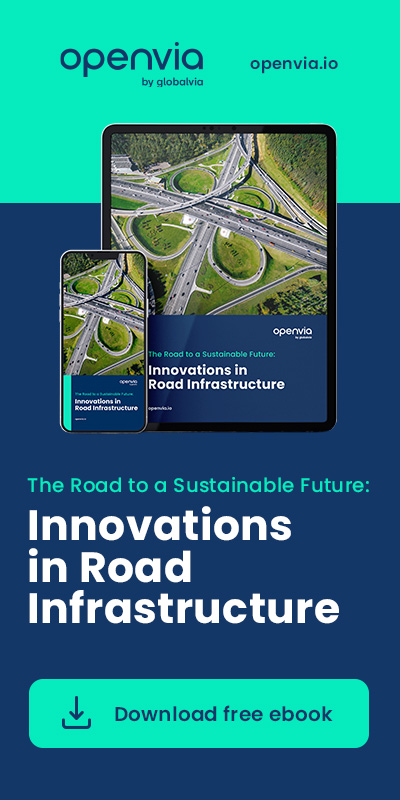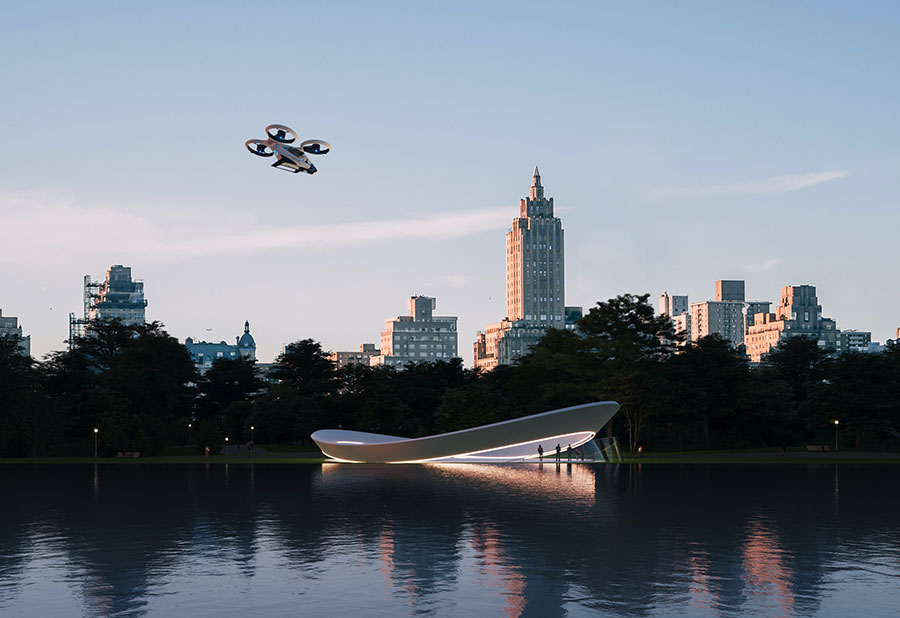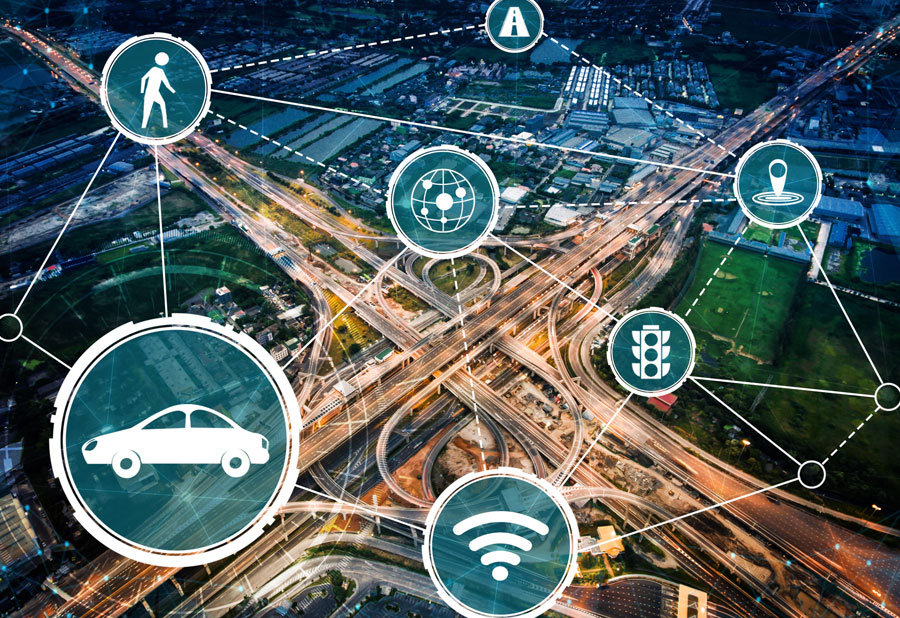Although the question may seem like a trick question, many of today’s roads are already smart. They have been designed and built to adapt to different weather conditions or heavy traffic. Even operation and maintenance have become increasingly refined, including, for example, electromagnetic technologies for counting the number of vehicles or advanced analytical models for traffic prediction or maintenance of critical assets.
The next two or three years will undoubtedly bring a qualitative change for road transport, as the tsunami of the fourth industrial revolution will definitely reach intelligent roads. At Globalvia, we are aware of the speed of change and of these new scenarios. What technologies will soon be at the forefront of the wave? Let’s find out what we need to be prepared for:
Roads that whisper to cars
What happens if you have an accident and can’t call for help? This can be reversed by incorporating advanced sensors in the pavement to alert the emergency services in near real time.
There are many advantages offered by sensorized pavement, including the possibility of providing detailed information on traffic patterns, enabling managers to improve planning and provide users with real-time route information. Many projects are already underway, such as Colorado’s RoadX in the United States, or in the United Kingdom or Israel with initiatives from the start-up world.
Want to know more about Roads of the Future?
Autonomous vehicles have a plan B
Autonomous vehicles can drive themselves 99% of the time thanks to pre-set decisions and artificial intelligence algorithms. There are 6 levels of autonomy and tests are currently underway with levels 4 and 5. However, it is likely to take some time to reach 100%. To make the arrival of autonomous cars on the roads a reality in the next two years, enabling technology is being developed to, among other things, overcome policy and regulatory hurdles.
An autonomous vehicle allows you to connect in real time with a human-managed support service to help you resolve unpredictable or unsafe emergency situations. A human operator and the car’s AI (Artificial Intelligence) systems will work together during a remote intervention. In this sense, the human assists the autonomous vehicle in making decisions in a complex scenario and the car executes the decision supported by a set of advanced sensors and actuators.

Data, data and more data
And what happens with all the data generated by roads and connected cars? Some companies have it very clear and are creating different marketplaces of data and services for the driving of the future or for the generation of new models around mobility.
The interconnection of data between the car and cities and infrastructures will have a very positive impact on citizens. Users will be able to access real-time information about their travel route, purchase their favorite services on the go and enjoy safer and more relaxed driving.
Intelligent parking
According to Bosch, 30 % of the traffic volume in city centres is caused by cars looking for parking. Technological solutions aimed at simplifying the search for free spaces and even implementing automated parking will grow exponentially. The application of machine vision is a growing technology to monitor the use and occupancy of parking spaces, both in garages and on the street, and will provide drivers with real-time information on free spaces and their location.
Traffic signals, traffic lights and intelligent road lighting
In Oslo (Norway) they have deployed a system on a 15-kilometre stretch of road that manages to reduce energy and economic costs without compromising the safety of drivers. In the first week alone, they managed to save 2,300 kilowatt hours. With this technology, at low traffic density, the road luminaires operate at only 20 % of their maximum capacity. The implemented system, based on IoT(Internet of Things), is able to detect the movement of cars and pedestrians, increasing the maximum power of the luminaires in front of the vehicle to better illuminate the area of the road ahead. Once the vehicle has passed, the streetlights return to their normal energy-saving position.
Smart supercharging of electric cars
New forms of propulsion, driven by environmental concerns, are already a reality. While the trend is sailing towards the installation of charging stations everywhere, scientists are experimenting with new ways of recharging vehicles on the road. Some European initiatives, underway since 2014, explore the possibility of recharging your electric car simply while driving on a stretch of road capable of transmitting electricity to the vehicle or recovering energy from the friction of vehicle movement. In the next two years, we will start to see installations massively deployed, as is already a reality in China or the United States (Smart Powered Lanes).
What if the road was the sky?
While the logistics world is eagerly awaiting the arrival of drones and autonomous cars for last-mile distribution, flying taxis are no longer science fiction. 2019 will be the year when companies move from pilot flights to controlled testing in cities. Uber, Volocopter, Airbus, among other companies, are already working to map out new airways in the sky connecting different points in a city.
In short, disruptive technology is changing the way we move. Are we ready for it?






